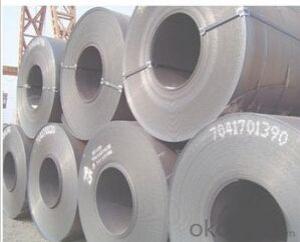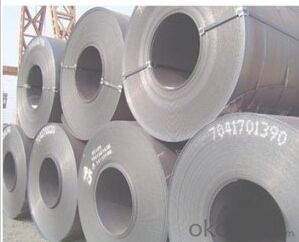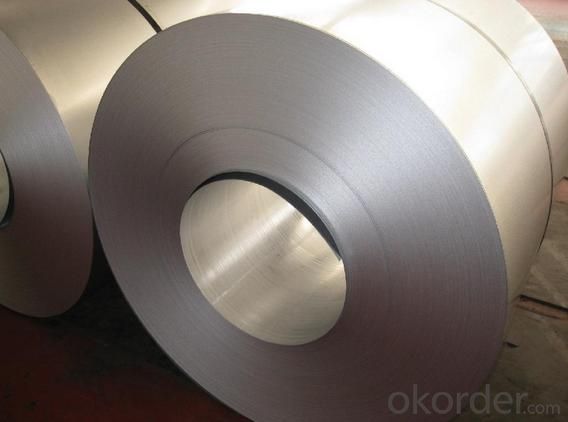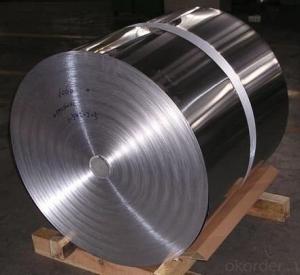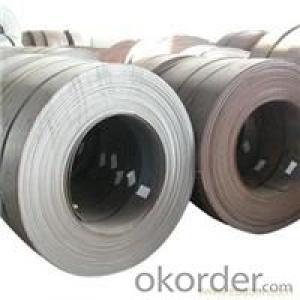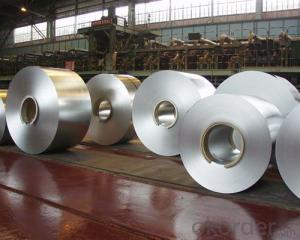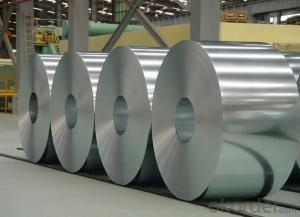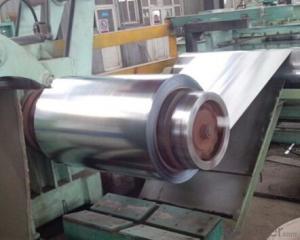Hot Rolled Pickling Steel for Construction
- Loading Port:
- Tianjin
- Payment Terms:
- TT OR LC
- Min Order Qty:
- 25 m.t.
- Supply Capability:
- 50000 m.t./month
OKorder Service Pledge
OKorder Financial Service
You Might Also Like
Hot rolled steel coil Product Description:
Hot rolled pickling steel
Quick Details
Standard: ASTM, DIN, GB, JIS
Place of Origin: China (Mainland)
Model Number: SPCC
Type: Steel Coil
Technique: Hot Rolled
Surface Treatment: Coated
Application: Construction, manufactory
Width: 1, 000mm, 1, 200mm, 1, 250mm
Packaging & Delivery
Packaging Detail: Standard Exported Packing
Delivery Detail: Within 20 days.
Specifications
Standard: ASTM, DIN, GB, JIS
Grade: SPCC/DC01/SAE1008/ST12
Thickness: 1.8-4.0mm
Place of Origin: China (Mainland)
It's widely used in the bilding materials in construction.
Normally color is skyblue RAL5015 and Off white RAL9002.
1-Thickness: 1.8-4.0mm
2-width: 600mm-1250mm
3-weight: About 5 ton
4-standard: SGCC, DX51D, ASTM A653, JIS G3302
5-Zinc coating, 60g-250g
6-regular color in China is SKY BLUE RAL5015 and OFF WHITE RAL9002, the other color price is higher, and needs a MOQ quantity (25ton for 1 container)
7-paint normally is PE coating, we can also produce PVDF coating.
roduct Name | Hot rolled pickling steel |
Model Number | SPCC |
Standard | ASTM,DIN,GB,JIS |
Type | Steel Coil |
Technique | Hot Rolled |
Surface Treatment | Coated |
Application | Construction, manufactory |
Width | 1,000mm, 1,200mm, 1,250mm |
Thickness | 1.8-4.0mm |
Grade | SPCC/DC01/SAE1008/ST12 |
- Q: I want to start getting throwing knives and i was wondering what material is best for quality, but still cheap. I also saw some 440 stainless steel knives that i liked and wanted to know if the material was good
- Stainless Steel Throwing Knives
- Q: What is the cost of steel coils?
- The cost of steel coils can vary depending on factors such as the type of steel, the thickness and size of the coils, and market conditions. It is best to contact suppliers or check current market prices for accurate cost information.
- Q: What are the common methods of recoiling steel coils?
- Manufacturers and customers have various options when it comes to recoiling steel coils. One frequently used method is slitting, which employs rotating circular blades to cut a wide steel coil into narrower strips. This results in multiple smaller coils with desired widths. Slitting is commonly employed to create coils of different sizes for diverse applications. Another technique is known as cut-to-length (CTL) recoiling, where the steel coil is cut into specific lengths according to the customer's requirements. This involves passing the coil through a straightening and leveling machine, followed by a flying shear that cuts the steel into the desired lengths. CTL recoiling is particularly useful in industries that demand precise and uniform steel lengths, such as construction or automotive. Furthermore, there is a method called coil-to-coil recoiling. This process involves rewinding the steel coil onto a new coil with the desired dimensions and properties. Coil-to-coil recoiling is typically utilized when the original coil needs resizing, reconditioning, or rerolling for further processing or transportation purposes. Specialized recoiling machines ensure proper tension, alignment, and winding of the steel coil onto the new coil. In conclusion, the recoiling of steel coils can be accomplished through various methods, including slitting, cut-to-length recoiling, and coil-to-coil recoiling. Each method offers its own advantages and is chosen based on factors such as required coil dimensions, precision, efficiency, and the specific needs of the industry or customer.
- Q: This EN10025 S355JR is a European code for steel, of which the properties can be found here.
- Is bether to use this one below! ASTM A588/A588M. Standard Specification for High-Strength Low-Alloy Structural Steel with 50 ksi [345 MPa] Minimum Yield Point , Weather Resistant
- Q: How is it used easy 10 points just tell me how its used or any intersting facts this is for my comp science paper lol. I know what the hell does steel have to too do with computers he is a Fg! Please be descriptive THANKS! FAST ANSWERS TOO it 9pm bedtime for a 14 year old lol..
- steel is used for cars and trains. one of the largest steel manufacturers is in my town its called CarTech its in reading pa.
- Q: I am thinking of buying a stainless steel necklace, but I need to know if it will discolor. My brothers ring turned brown, but he forgot what kind of metal it was. Also answer if I can wear it in the shower because I wear my other necklace in it.
- I would say don't wear it in the shower because it will tarnish and it could rust.
- Q: How are steel coils inspected for elongation?
- Steel coils are inspected for elongation using a variety of methods. One common method is the use of a tensile testing machine. In this method, a small sample is taken from the steel coil and placed into the machine. The machine then applies a pulling force to the sample until it breaks. The amount of force required to break the sample is measured, and this information is used to determine the elongation of the steel coil. Another method used to inspect steel coils for elongation is the use of ultrasonic testing. In this method, high-frequency sound waves are passed through the steel coil. By analyzing the reflection of these sound waves, it is possible to determine the elongation and other properties of the steel coil. Visual inspection is also an important aspect of inspecting steel coils for elongation. Trained technicians visually inspect the steel coils for any signs of stretching or deformation that may indicate excessive elongation. Overall, a combination of mechanical testing, ultrasonic testing, and visual inspection is used to thoroughly inspect steel coils for elongation and ensure their quality and compliance with industry standards.
- Q: How are steel coils inspected?
- Steel coils are inspected through a combination of visual examination, dimensional measurement, and non-destructive testing methods such as ultrasonic testing or magnetic particle inspection. These inspections help identify any surface defects, cracks, or abnormalities in the coils to ensure they meet quality standards and specifications.
- Q: What are the common coil defects and their causes?
- Common coil defects include: 1. Coil breaks: These are caused by improper handling, excessive tension, or defects in the raw material. They result in breaks or fractures in the coil. 2. Edge waves: Edge waves occur due to uneven tension during winding, improper coil alignment, or excessive elongation. This leads to wavy or uneven edges in the coil. 3. Buckling or wrinkling: Buckling or wrinkling can be caused by excessive elongation, improper winding tension, or uneven cooling. It results in irregularities or folds in the coil surface. 4. Slivers: Slivers are thin strips of material that can be present on the surface of the coil. They are typically caused by poor shearing or cutting processes, improper cleaning, or debris in the production line. 5. Oil spots: Oil spots are oily or greasy stains that can appear on the coil surface. They are usually caused by inadequate cleaning or lubrication during the manufacturing process. 6. Coating defects: Coating defects can include uneven or inconsistent coating, bubbles, or peeling. These defects can be caused by issues with the coating application process, improper drying or curing, or contamination in the coating material. It is important to address these coil defects promptly to ensure product quality and prevent further issues during subsequent processing or usage.
- Q: How are steel coils inspected for surface finish using profilometry?
- Steel coils are inspected for surface finish using profilometry by measuring the surface topography using a profilometer. The profilometer scans the surface of the steel coil and records the deviations from the ideal surface. This data is then used to determine the roughness, waviness, and other surface parameters of the steel coil, providing a quantitative assessment of its surface finish quality.
Send your message to us
Hot Rolled Pickling Steel for Construction
- Loading Port:
- Tianjin
- Payment Terms:
- TT OR LC
- Min Order Qty:
- 25 m.t.
- Supply Capability:
- 50000 m.t./month
OKorder Service Pledge
OKorder Financial Service
Similar products
Hot products
Hot Searches
Related keywords
